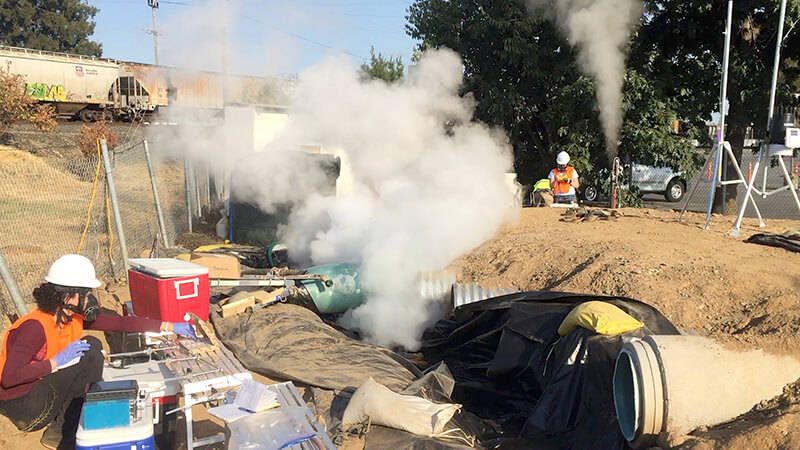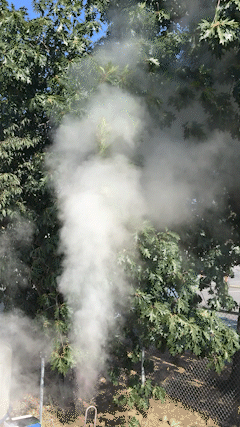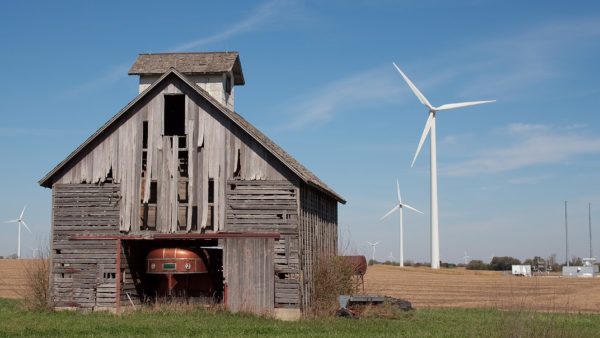
A helpful method for fixing underground sewage and water pipes in a way that avoids digging big trenches is actually pumping tiny plastic particles into the air, often in densely populated urban areas, scientists at Indiana’s Purdue University have found.
When a pipe breaks, contractors used to have to dig a trench big enough to let crews cut out the broken section and replace it with a new one.
Now, a more surgical approach called curing-in-place lets them insert a stent in the pipe in the form of a resin-soaked fabric tube or sock, and then inflate the stent with pressurised steam so it can seal the pipe.
The technique removes a lot of time and hassle, but the plumes of vapour it sends into the air contain polluting chemicals, including what scientists say are “significant” volumes of nanoplastics.
Nanoplastics are particles measuring 100 nanometres or fewer across. One nanometre is 0.000001mm.
Nanoplastic volcanoes
It had been thought that microplastics – particles smaller than 0.5mm in diameter – and nanoplastics entered the air, water and soil mostly when plastic degrades and wind or other disturbances break bits off.

“What we show here is that there is a process commonly used throughout the whole modern world that is dumping nanoplastic pollution into the air,” said study leader Alexander Laskin, professor of analytical chemistry in Purdue’s College of Science.
His team collected condensate from the vapour plumes and subjected it to comprehensive chemical analysis.
This, they wrote in the journal Nature Nanotechnology,“revealed the abundant presence of insoluble colloids, which after drying form solid organic particles with a composition and viscosity consistent with [nanoplastics]”.
Studies show that we accumulate nanoplastics in our bodies by breathing, drinking and eating them, although scientists aren’t sure yet what the long term health effects are.
Lovely and warm?
Andrew Whelton, a Purdue professor of civil, environmental and ecological engineering who contributed to the study, has been researching cure-in-place pipe repair methods for almost a decade.
He said they often saw workers standing right in the vapour plumes, sometimes to get warm in winter.
“This new study indicates these workers and ones before them have likely been inhaling microplastics and nanoplastics,” he said.
He told Indiana radio station WBOI that the problem was solvable either by capturing the vapour plumes, or by changing the chemicals used in the process.
“That’s the issue here,” he said. “There’s technologies and approaches to fix the issue that are fairly straightforward, but nothing is changing because there is no driving force to cause it to change.”











